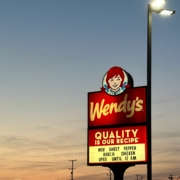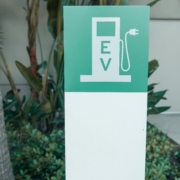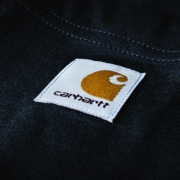Red Lobster May Be Washed Away
Brands do not always survive financial engineering. Sears is an example. Bed Bath & Beyond is another. Toys R’Us is still struggling after a bankruptcy and collapse. Quiznos survived bankruptcy but is a small shadow of its former self.
Some brands are lucky. Some brands manage to slog through numerous mergers, spinoffs and sales to generate full recovery and more. Allstate, Discover Financial and Coldwell Banker are three that not only survived but are now giants in their industries. Interestingly, Allstate, Discover and Coldwell Banker were owned by Sears. Luckily, these brands escaped Sears’ fate.
Many of the brands that have massive debt tend to disappear. Or these brands find ways in which to stay alive but through different methods such as Bed Bath & Beyond which sold its name and is now an online operation of Overstock.com. Toys R’Us tried a revival by opting for stores within Macy’s. Unfortunately, Macy’s is not doing well and is closing stores.
Financial engineering is the catchall phrase for extreme cost cutting. This cost cutting includes job losses, debt accumulation, share buy-backs, increased dividends, forced spinoffs and money siphoned into the pockets of investors rather than invested into sustainable profitable growth of businesses.
Financial engineers see strong brand equity as an opportunity to extract value rather than extend brand strength. This is a form of brand extortion. Proponents of financial engineering take brand loyalty for granted. Investments in continuous improvement and innovation are decreased as dividends and share buybacks are increased. Monies are transferred from R&D, customer insight research, service and support and marketing resources.
Financial engineering is a shareholder-driven rather than a customer-driven way of doing business. Some private equity activist investors focus on making short-term gain for shareholders, rather than building a brand that requires both short-term and long-term strategies. Resources that should be invested in brand building are siphoned into shareholders’ pockets.
It appears as if the iconic seafood restaurant, Red Lobster, is possibly headed for bankruptcy court. Bloomberg BusinessWeek reporting indicates that Red Lobster needs to restructure its huge debt, renegotiate a large number of leases and, hopefully, extricate itself from some long-term contracts.
A large part of the Red Lobster problem relates to its numerous owners along with associated management changes since 2014. Brand-businesses need consistency.
In 2014, Starboard Value LP led by activist investor Jeffrey Smith, took a major position in Darden Restaurants. In a long, detailed presentation, Mr. Smith excoriated Darden for mismanagement of the portfolio (Red Lobster, Olive Garden, LongHorn Steakhouse, Cheddar’s Scratch Kitchen) and for preventing the brands from making more money for shareholders. Starboard Value LP fought for replacement of twelve Board members due to declining profit. (Darden also owns Darden Specialty Restaurant Group: Bahama Breeze, Seasons 52, Yard House, The Capital Grille and Eddie V’s Prime Seafood.)
At the time, the Darden Board of Directors saw selling Red Lobster as a means of showing their fiscal performance. Starboard’s reaction was ballistic, creating such animosity that the Darden Board issued an open letter to shareholders accusing Starboard of making false and misleading statements.
Eventually, Starboard won. The entire Board of Darden was completely replaced. But not before Darden’s Board sold Red Lobster.
In 2015, to give shareholders more money, Starboard spun off the portfolio’s real estate into a REIT for short-term shareholder returns. Once the REIT hit the news, Darden’s stock price rose as much as 5.8%, advancing its yearly rise to more than 20%. However, Darden admitted that marketing costs went down and customer traffic dipped. You cannot build a strong business on a declining customer base.
What happened next was surprising. Originally, Starboard focused on Olive Garden implementing severe cost-cutting as the way to fix its businesses. Customers started complaining and complaining with their feet. Starboard realized that financial engineering was not working. But, overtime, Darden Restaurants learned the limitations of financial engineering and focused on building equity in its portfolio. Starboard reversed its approach by focusing on re-energizing Olive Garden.
As of today, Olive Garden is a viable restaurant with a loyal base. There are concerns that continuous price hikes have alienated Olive Garden’s low income customers. This is a potential problem because you cannot build a strong business on a declining customer base. But, Olive Garden is doing well. Unlike its lost sibling, Red Lobster.
But, Red Lobster suffered a different fate.
In the 1980s, many large corporations branched out from their areas of expertise to own leading brands. General Mills, the US multi-national food manufacturer, was one of these companies, expanding into toys in 1965 and then into restaurants with the 1970 acquisition of the 5-store seafood restaurant, Red Lobster, founded in 1968. General Mills created a division called General Mills Restaurants, which developed the Italian-themed Olive Garden in 1982. General Mills spun off General Mills Restaurants to shareholders in 1995 calling it Darden Restaurants.
Under pressure from Starboard as to possible mismanagement, the Darden Board of Directors made the fateful decision authorizing the sale of the Red Lobster brand to Golden Gate Capital, a San Francisco private equity firm, owners of Romano’s Macaroni Grill and California Pizza Kitchen. The Darden Board based the Red Lobster sale price on a review of the brand, its customer base, rising commodity prices for seafood and the brand’s declining guest counts.
The Darden Board hoped to use Red Lobster’s sale as a means of generating more shareholder money. the sale of Red Lobster for $2.1 billion to Golden Gate Capital was a hail Mary pass. Darden received 1.6 billion indicating that $1 billion would be used to address outstanding debt.
The first nail in Red Lobster’s coffin was that this sale to Golden Gate Capital was a leveraged buyout. A leveraged buyout (LBO) is when one business acquires another business using lots of borrowed money that allows for the purchase. Using debt, instead of its own money, helps the buyer reduce costs of financing the purchase. Unfortunately, if the purchased entity is a poor performer, there is a risk of major cash flow losses.
An LBO just piles on debt, in many cases, crushing debt. At the time of Golden Gate Capital’s LBO of Red Lobster, Thai Union Group, a seafood supplier, owned 25% of Red Lobster. Thai Union Group eventually bought Golden Gate Capital’s stake in Red Lobster in 2021.
Bloomberg BusinessWeek indicates that Thai Union Group wrote down its stake in Red Lobster this year. Thai Union recorded a share loss of $19 million in the first nine months of 2023, according to The New York Post. Because of this loss, Thai Union reported a $530 million non-cash impairment charge in its fourth quarter earnings.
Basically, this means that the value of Red Lobster is now reduced. This loss of value appears on Thai Union’s balance sheet. With this impairment stated, the carrying value of Red Lobster’s goodwill is now the new accounting basis. Goodwill is the purchase price of a company less the difference between the fair market value of the assets and liabilities. Red Lobster is just not worth as much as it used to be worth. Writing down assets happens when there is financial engineering. Money is not intended to build the brand-business as an asset. This happened to numerous Kraft Heinz brands as 3G Capital focused on their zero-based budgeting at the expense of the iconic brands in the Kraft Heinz portfolio.
A spokesperson for Thai Union stated: “The combination of COVID-19 pandemic, sustained industry headwinds, higher interest rates and rising material and labor costs have impacted Red Lobster, resulting in prolonged negative financial contributions to Thai Union and its shareholders.”
Just last month in March 2024,, Red Lobster hired Jonathan Tibus as CEO. Mr. Tibus is a bankruptcy and restructuring expert. Mr. Tibius was CEO during the bankruptcy of Kona Grill. He was also chief restructuring officer of Krystal, the Southern fast-food restaurant known for its small, square burgers, aka sliders. Reporting indicates that Red Lobster executives saw Red Lobster as “walking dead.” So, the focus became what options are available to save the company.
Unfortunately, Red Lobster had debt the minute it arrived at Golden Gate Capital. Juggling debt payments, onerous leases and labor costs mad matters even worse. Brands pay the price for the pecuniary, greedy actions of financial engineers who favor shareholder value over customer value. What financial engineers do not understand is that without customer value there is no shareholder value. On the other hand, financial engineering is more about take-the-money-and-run.
Additionally, tactics at Red Lobster generated losses rather than gains. According to CNN, the “endless shrimp promotion led to deep losses that the company is still trying to dig out of.“ To remedy these losses, Red Lobster’s answer is all you can eat lobster. “In celebration of its annual Lobsterfest, Red Lobster is giving 150 winners an“Endless Lobster Experience,” a two-hour complimentary feast of unlimited lobster, two sides and Cheddar Bay Biscuits.”
These all-you-can-eat promotions do not promote the brand. These promotions attract meal-deal seekers at a huge cost to the business. These promotions seem especially off-base considering that Red Lobster posted a $12.5 million operating loss in fourth quarter 2023 alone. Free food or lots of food for very little money are probably not tactics to be used when you are going under water. As Albert Einstein said, “Insanity is doing the same thing over and over again expecting different results.”
What’s next? There is a significant chance that bankruptcy court is around the corner, However, now that Red Lobster’s bankruptcy plans may be closer to reality, holders of Red Lobster gift cards are ready to dine, just to use up the cash on the card before Armageddon. Hardly a brand win-win.










